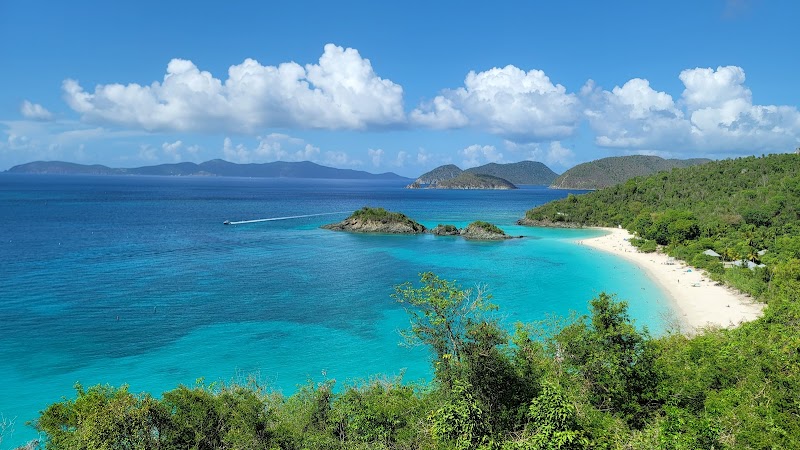Wildlife Adventures Near St Thomas, VI: A Practical Guide to Nature’s Best
Encounter the unique wildlife of St Thomas, VI, from forest trails to vibrant reefs. This guide offers practical tips for exploring the island's natural wonders, ensuring a memorable outdoor adventure.
Start Early to Beat the Heat
Mornings offer cooler temperatures and active wildlife, making early starts ideal for hikes and wildlife spotting.
Wear Sturdy Hiking Shoes
Trails around St Thomas have uneven terrain and rocky patches; proper footwear reduces injury risk and improves comfort.
Bring Refillable Water
Hydration is critical in the tropical climate. Carry a refillable water bottle to stay hydrated without relying on single-use plastics.
Respect Wildlife Viewing Distances
Maintain a safe distance from animals to avoid disturbance and ensure your safety, especially around nesting birds and reptiles.
Wildlife Adventures Near St Thomas, VI: A Practical Guide to Nature’s Best
Discover the vibrant wildlife near St Thomas, VI, where every trail and shoreline invites you to engage with nature that’s fiercely alive. This tropical region offers a rich blend of terrestrial and marine species unique to these Caribbean isles. Whether you’re scanning the treetops for the colorful Bananaquit or diving beneath the waves to meet the curious parrotfish, St Thomas delivers vivid encounters that reward both the casual nature lover and the serious wildlife observer.
St Thomas’s wildlife includes a variety of birds, reptiles, and marine creatures that thrive amid its lush hills and clear waters. Look for the Red-footed Booby along offshore islets or spot the endemic Virgin Islands Tree Boa during quiet forest hikes. The flora shapes the experience, too, with dense mangroves and tropical hardwoods creating habitats alive with sound and movement.
As you plan, consider key keywords to guide your search and focus: wildlife St Thomas, Virgin Islands birdwatching, St Thomas nature trails, marine wildlife St Thomas, hiking St Thomas VI, nature tours St Thomas, and snorkeling St Thomas wildlife. These terms connect you directly with the top experiences and providers.
Practical advice is essential here. Trails like the Lovanto Preserve offer clear paths rated moderate with mixed terrain and crested hills, giving views over bays where seabirds wheel and fishes dart. Start early for the best light and cooler temperatures. Bring sturdy footwear and hydration, and respect wildlife by maintaining distance and minimizing noise.
Marine wildlife excursions open a window into underwater realms rich with coral reefs, sea turtles, and nurse sharks. Guided tours enhance safety and sightings. Surround yourself with nature that’s as challenging as it is breathtaking, each step and dive an invitation to know a land and sea fiercely themselves.
By focusing on essential logistics alongside the thrill of discovery, this landing page balances inspiration with preparation for wildlife adventurers on St Thomas.
Nearby Trips
All Adventures
Boat Charters
Water Activities
Adventures near Charlotte Amalie
Discover the unique and memorable adventures that make Charlotte Amalie special.
Frequently Asked Questions
What unique wildlife can I expect to see near St Thomas?
Expect to encounter the Red-footed Booby on offshore islands, Virgin Islands Tree Boas on forested trails, and an array of marine species like parrotfish and sea turtles along the coral reefs. Birdwatchers will also spot Bananaquits and other tropical species.
Are there guided tours for wildlife viewing?
Yes, several local operators offer shore and boat-based wildlife tours focused on birdwatching, hiking nature trails, and snorkeling with marine creatures. Guided tours enhance safety and increase sighting opportunities.
What is the best time of day for wildlife hikes?
Early morning is best for cooler temperatures and active wildlife. Afternoon activity slows, and some creatures retreat, plus heat increases. Plan hikes to start at dawn or shortly after.
How should I prepare for the terrain on wildlife trails here?
Trails vary from flat coastal paths to moderate hills with mixed rocky and dirt surfaces. Wear suitable hiking boots, use a trekking pole if needed, and bring plenty of water to stay hydrated.
Are there any conservation efforts visitors should be aware of?
Local conservation initiatives focus on protecting native bird habitats and coral reefs. Visitors are encouraged to stick to marked trails, avoid disturbing wildlife, and minimize plastic waste to preserve the island’s ecosystems.
Can I spot wildlife from popular viewpoints?
Yes, locations like Drake’s Seat and Crown Mountain offer vistas where you can watch seabirds diving and coastal marine life near the shoreline. Quiet observation from these points reveals behaviors not seen closer to busy beaches.
Recommended Gear
Hiking Boots
Provides ankle support and traction on rocky and uneven paths on land trails.
Snorkeling Gear
Allows for direct exploration of vibrant marine wildlife in warm sea conditions.
Sun Protection
Sunscreen, hats, and sunglasses shield you from intense tropical sun exposure.
Reusable Water Bottle
Maintains hydration efficiently during humid conditions with limited access to fresh water.
Local Insights
Hidden Gems
- "Lovanto Preserve’s quiet trails with Virgin Islands Tree Boa sightings"
- "Flat Point trail for seabird watching away from crowds"
Wildlife
- "Red-footed Booby"
- "Virgin Islands Tree Boa"
- "Parrotfish"
- "Bananaquit"
History
"The island’s natural areas hold sites once used by indigenous peoples and later as plantations, weaving cultural history with ecology along some trails."
